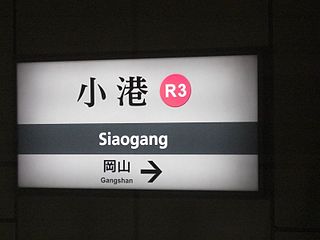Bính âm Thông dụng
| Bính âm Thông dụng 通用拼音 | |
|---|---|
| Thể loại | Bảng chữ cái
Hệ thống Latinh hóa |
| Sáng lập | Bộ Giáo dục (Trung Hoa Dân Quốc) |
Thời kỳ | |
| Hướng viết | Trái sang phải |
| Các ngôn ngữ | Quan thoại Đài Loan |
| Hệ chữ viết liên quan | |
Hậu duệ | Daī-ghî tōng-iōng pīng-im (Tiếng Phúc Kiến Đài Loan) |
Thẻ ngôn ngữ IETF: zh-Latn-tongyong | |
| Bính âm Thông dụng | |||||||||||||||
| Phồn thể | 通用拼音 | ||||||||||||||
|---|---|---|---|---|---|---|---|---|---|---|---|---|---|---|---|
| Nghĩa đen | Từ viết theo cách phát âm thông thường | ||||||||||||||
| |||||||||||||||
Bính âm Thông dụng (tiếng Trung: 通用拼音; Hán-Việt: Thông dụng Bính âm, tiếng Anh: Tongyong Pinyin) là một hệ thống Latinh hóa chính thức của tiếng Quan thoại được dùng tại Trung Hoa Dân Quốc (Đài Loan) từ năm 2002 đến 2008. Hệ thống này được sử dụng không chính thức từ năm 2000 đến 2002, khi mà hệ thống Latinh hóa mới của Đài Loan còn đang trong tiến trình đánh giá để áp dụng. Bộ Giáo dục Trung Hoa Dân Quốc đã phê duyệt đưa vào sử dụng hệ thống này kể từ năm 2002,[1][2] nhưng việc sử dụng hệ thống này không mang tính bắt buộc.
Tuy nhiên, kể từ ngày 1 tháng 1 năm 2009, Bộ Giáo dục lại chính thức thúc đẩy việc sử dụng Bính âm Hán ngữ (chiểu theo quyết định ngày 16 tháng 9 năm 2008); các chính quyền địa phương "sẽ không được nhận được trợ cấp tài chính từ chính phủ trung ương" nếu họ sử dụng hệ thống Latinh hóa của Bính âm Thông dụng.[3][4] Sau sự thay đổi về mặt chính sách này, Bính âm Thông dụng vẫn được sử dụng để phiên âm tên một số địa danh và tên cá nhân ở Đài Loan (Trung Hoa Dân Quốc).[5] Một số tên Latinh hóa của các khu, ga đường sắt đô thị[6] và đường phố[7][8] ở Cao Hùng,[9] Đài Nam,[10] Đài Trung,[11][12] huyện Vân Lâm[13] và một số khác[14][15][16] được Latinh hóa bằng Bính âm Thông dụng, – chẳng hạn như quận Kỳ Tân (旗津區, Cíjin Cyu) của Cao Hùng.[17]
Thư viện ảnh
[sửa | sửa mã nguồn]Một số hình ảnh tên gọi được Latinh hóa bằng hệ thống Bính âm Thông dụng:
Xem thêm
[sửa | sửa mã nguồn]Tham khảo
[sửa | sửa mã nguồn]- ^ “Tongyong Pinyin the new system for romanization”. Taipei Times. 11 Tháng 7 năm 2002. tr. 3.
- ^ “Taiwan Authority Concerned Passes Tongyong Pinyin Scheme”. People's Daily Online. 12 Tháng 7 năm 2002.
- ^ Shih Hsiu-Chuan (18 Tháng 9 năm 2008). “Hanyu Pinyin to be standard system in 2009”. Taipei Times. tr. 2.
- ^ “Gov't to improve English-friendly environment”. The China Post. 18 Tháng 9 năm 2008. Bản gốc lưu trữ 19 Tháng 9 năm 2008.
But local governments will not be able to get financial aid from the central government if they insist on using the provincial Tongyong Pinyin system for all new street signs, documents, tourist maps, and other things related to Chinese romanization.
- ^ “NOTICE TO READERS”. Taipei Times. 25 tháng 8 năm 2009. Truy cập 14 tháng 7 năm 2019.
To reflect general acceptance of the Tongyong Pinyin system by local governments, from today, Taipei Times will adopt this as the default Romanization system for place names in Taiwan. Exceptions apply for Taipei City, for which the Hanyu Pinyin system applies; city and county names whose traditional spelling has been retained (e.g., Kaohsiung, Keelung, Hsinchu); and localities with commonly accepted variations (e.g. Tamsui).
- ^ Liu Chien-kuo; Chen Ting-fei; Kuan Bi-ling; Cheng Pao-chin (18 tháng 1 năm 2017). “Language: A tool for messages or identity”. Taipei Times. Truy cập 29 tháng Bảy năm 2019.
Since Taiwan's Tongyong pinyin is closer to how English is actually pronounced and spoken around the world, – it uses "si" instead of "xi" – the new MRT line should use Tongyong pinyin. Kaohsiung's MRT has used Tongyong pinyin for many years, yet foreign visitors and residents have no problem navigating the system.
- ^ 劉婉君 (15 tháng 10 năm 2018). 路牌改通用拼音? 南市府:已採用多年. Liberty Times (bằng tiếng Trung). Truy cập 28 tháng Bảy năm 2019.
基進黨台南市東區市議員參選人李宗霖今天指出,台南市路名牌拼音未統一、音譯錯誤等,建議統一採用通用拼音。對此,台南市政府交通局回應,南市已實施通用拼音多年,將全面檢視路名牌,依現行音譯方式進行校對改善。
- ^ Eryk Smith (27 tháng 11 năm 2017). “OPINION: Hanyu Pinyin Should Not Be Political, Kaohsiung”. Truy cập 13 tháng Bảy năm 2019.
why does Kaohsiung City insist on making visitors guess what 'Shihcyuan' is supposed to represent? Especially when a few blocks away, the same road has somehow morphed into 'Shiquan' (十全路) Road? Move away from Kaohsiung's city center and streets, neighborhoods or townships can have several romanized names ... sometimes on the same signage.{...}The refusal to adopt Hanyu in Kaohsiung seems based on nothing more than groundless fear of loss of identity or diminished regional autonomy. Listen, Kaohsiung: we won't lose our identity or our freedom by changing the romanized spelling of Singjhong Road (興中)to Xingzhong.
- ^ “Administrative Districts”. Kaohsiung City Government. 30 tháng 9 năm 2016. Truy cập 26 Tháng tư năm 2019.
Taoyuan District Maolin District Namasia District Jiasian District Liouguei District Shanlin District Meinong District Neimen District Cishan District Dashu District Daliao District Zihguan District Linyuan District Tianliao District Yanchao District Dashe District Renwu District Siaogang District Fongshan District Mituo District Alian District Gangshan District Niaosong District Ciaotou District Nanzih District Zuoying District Gushan District Sanmin District Sinsing District Cianjin District YanCheng District Lingya District Cijin District Cianjhen District Hunei District Lujhu District Cheting District Yongan District
- ^ “District Office”. Tainan City Government Global Website. 3 tháng 6 năm 2016. Truy cập 23 tháng Bảy năm 2019.
Eastern District Office North District Office West Central District Office South District Office Anping District Office Annan District Office Sinying District Office Yanshuei District Office Baihe District Office Liouying District Office Houbi District Office Dongshan District Office Madou District Office Xiaying District Office Lioujia District Office Guantian District Office Danei District Office Jiali District Office Syuejia District Office Sigang District Office Cigu District Office Jiangjyun District Office Beimen District Office Sinhua District Office Shanhua District Office Sinshih District Office Shanshang District Office Yujing District Office Nansi District Office Nanhua District Office Zuojhen District Office Rende District Office Gueiren District Office Guanmiao District Office Longci District Office Yong Kang District Office Anding District Office
- ^ 喻文玟 (15 tháng 6 năm 2019). 漢語拼音vs.通用拼音 中市捷運、街道不同調. 聯合新聞網 (bằng tiếng Trung). Truy cập 28 tháng Bảy năm 2019.
台中捷運綠線明年底通車,目前18站有命名爭議,捷運迷也發現,車站名稱的英文拼音「一市兩制」,台中的道路採「漢語拼音」,捷運站是用「通用拼音」,以主要幹道文心路為例,路牌是漢語拼音「wenxin」;捷運站是通用拼音「wunsin」。
- ^ Ching-Tse Cheng (25 tháng 8 năm 2020). “Station names of central Taiwan Metro pass preliminary review”. Taiwan News. Truy cập 31 Tháng tám năm 2020.
The Taichung City Council on Monday (Aug. 24) gave initial approval to station names on the Taichung Mass Rapid Transit's (TMRT) green line, which is set to begin operation by the end of this year.
After a preliminary inspection of the 16.71-km line Monday, the city council gave a nod to the 18 station names on the green line. The English station names were converted using Tongyong pinyin (通用拼音) while four of the stations will also have alternate names, according to CNA. - ^ “Village, Township and City offices”. 雲林縣政府 YUNLIN COUNTY GOVERNMENT. 24 tháng 9 năm 2019. Truy cập 27 Tháng Ba năm 2020.
Title PostDate Shueilin Township{...}Linnei Township{...}Kouhu Township{...}Cihtong Township{...}Sihhu Township{...}Dapi Township{...}Yuanchang Township{...}Gukeng Township{...}Taisi Township{...}Beigang Township{...}Baojhong Township{...}Tuku Township{...}Dongshih Township{...}Siluo Township{...}Mailiao Township{...}Huwei Township{...}Lunbei Township{...}Dounan Township{...}Erlun Township{...}Douliou City{...
} - ^ “Information”. Zhongshan District Office, Keelung City. Bản gốc lưu trữ 9 Tháng tám năm 2020. Truy cập 28 tháng Chín năm 2019.
Wunhua Rd. Fusing Rd. Fusing Rd.
- ^ “bg01”. 基隆市信義區公所 (bằng tiếng Trung và Anh). Bản gốc lưu trữ 9 Tháng tám năm 2020. Truy cập 28 tháng Chín năm 2019.
基隆市信義區公所 Keelung City Sinyi District Office
- ^ “Introduction”. Sinyi District Household Registration Office, Keelung. Bản gốc lưu trữ 14 Tháng mười hai năm 2018. Truy cập 28 tháng Chín năm 2019.
Subordinated to Keelung City Government, Sinyi District Household Registration Office is located in the center of Keelung City. The current district area is 10.670 sq. km., including 20 villages and 412 neighborhoods in total. Since many government institutions are here and a large proportion of the residents are government officials, Sinyi District is also called ¡§educational and cultural district.¡¨ It is adjacent to Jhongjheng District in the east and north, Renai District in the south, Rueifang District, New Taipei City in the South-east.
- ^ “History”. Cijin District Office,Kaohsiung City. Bản gốc lưu trữ 7 tháng Năm năm 2019. Truy cập 13 tháng Bảy năm 2019.
Cijin district
Liên kết ngoài
[sửa | sửa mã nguồn] GIẢM
24%
GIẢM
24%
 GIẢM
39%
GIẢM
39%
 GIẢM
29%
GIẢM
29%
 GIẢM
44%
GIẢM
44%
 GIẢM
29%
GIẢM
29%
 GIẢM
49%
GIẢM
49%








